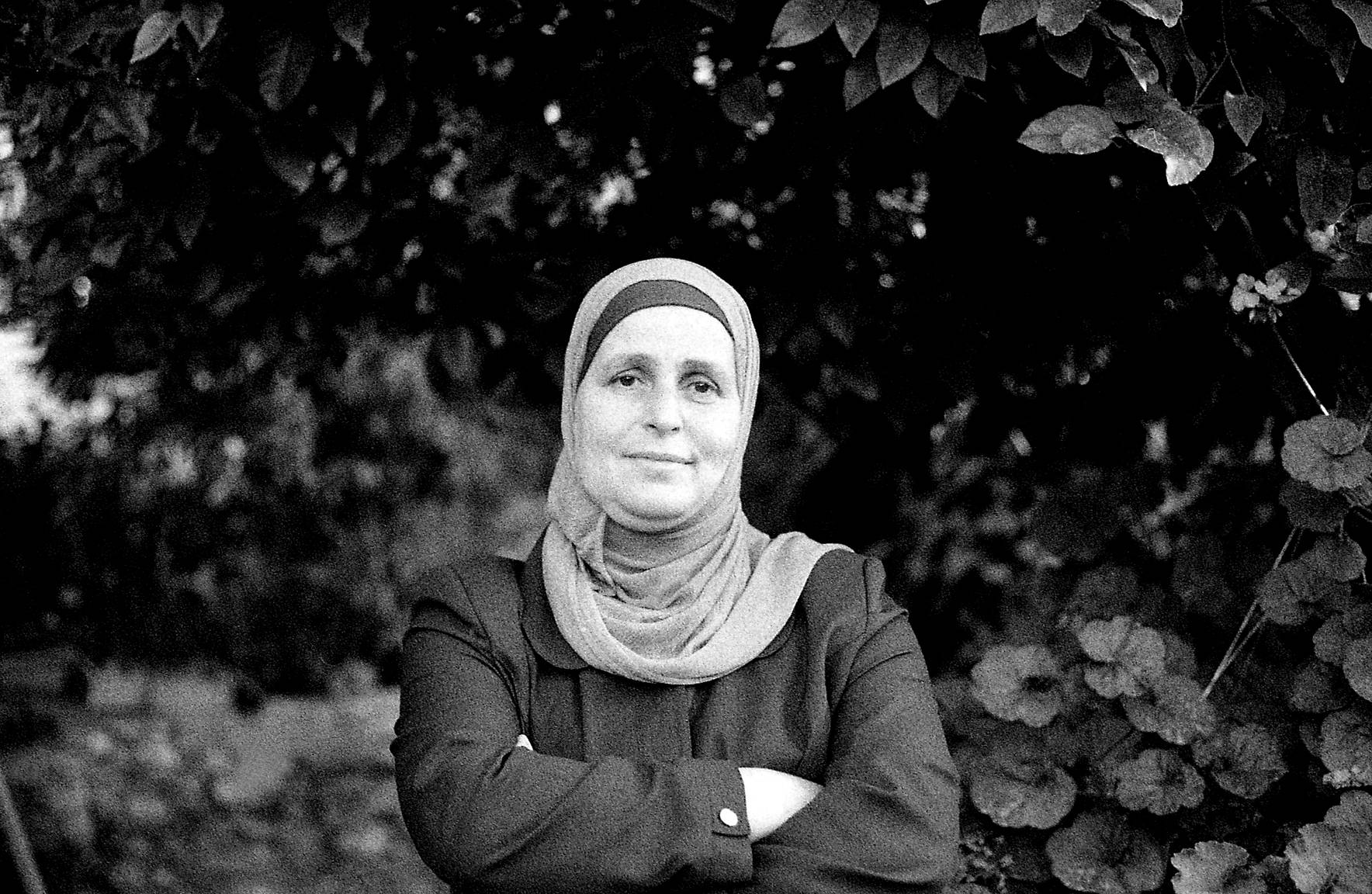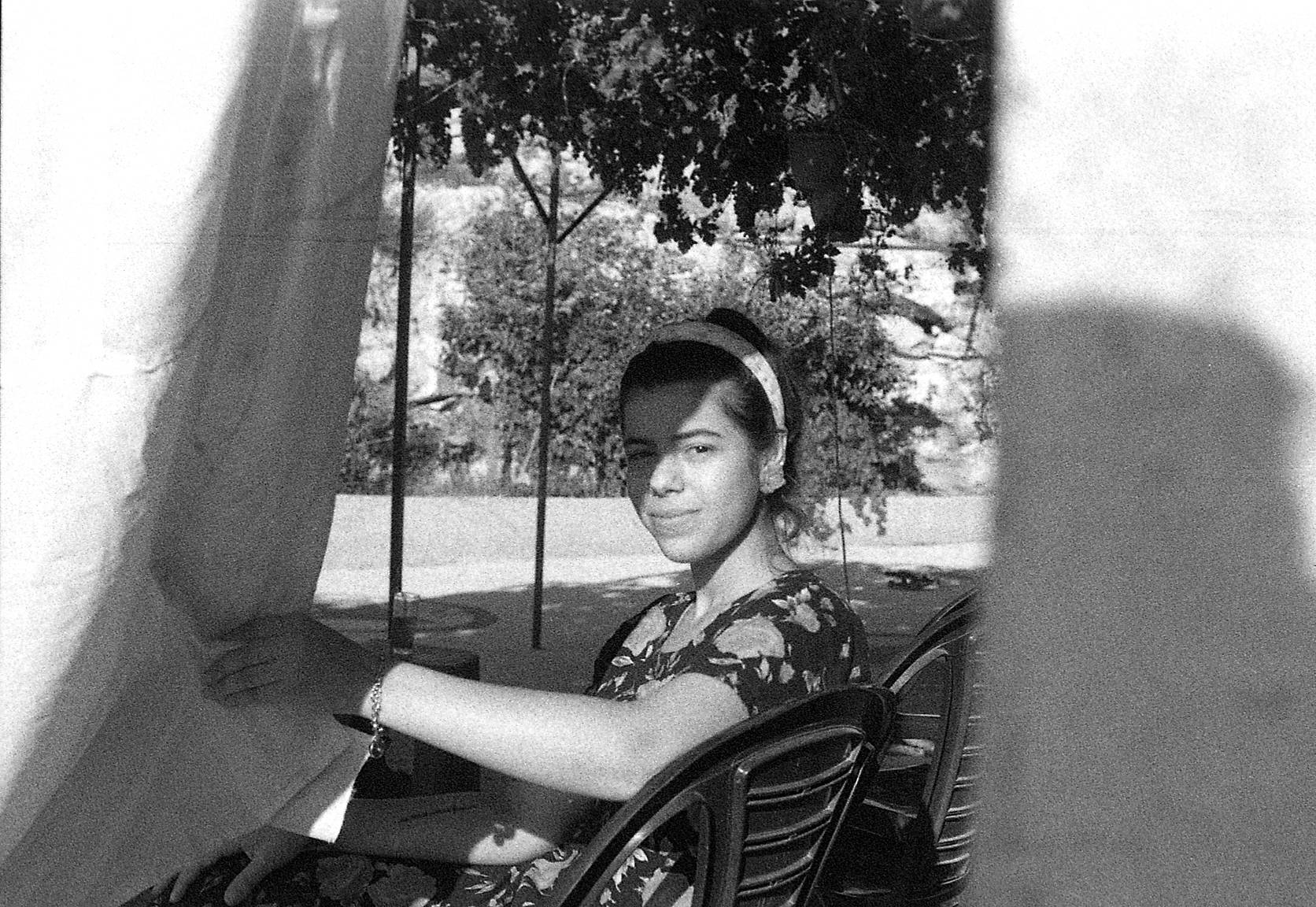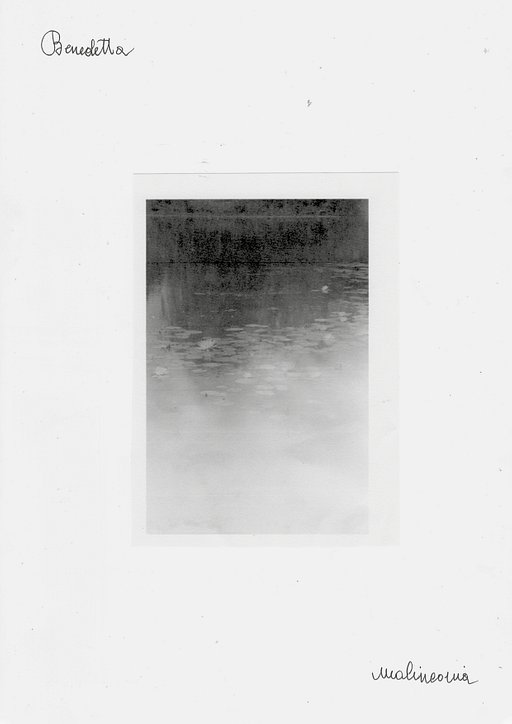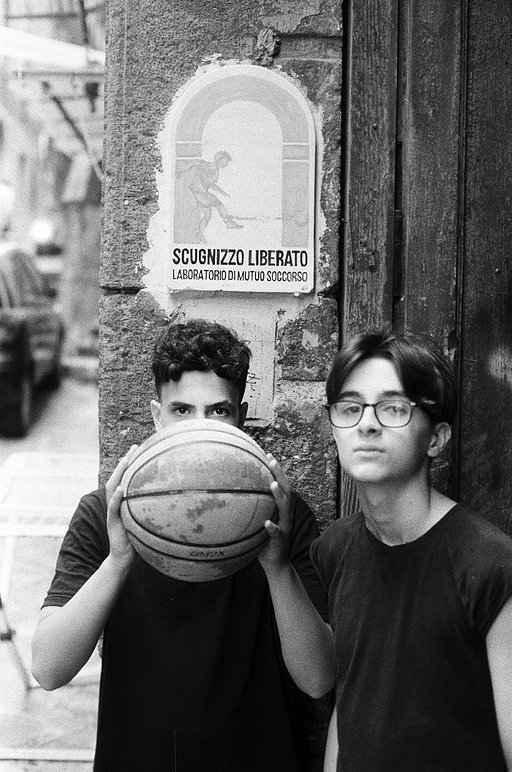Lomography x Perimetro – 36 Shots, One Story: Interview with Nastassia Isawi
1 9 Share TweetThis big open call attracted more than 250 submissions, and involved a network of 39 partners including cultural institutions, photography schools, magazines, labs and independent creative spaces who supported us by selecting the winning projects.
Seven photographers from seven Italian cities (Bologna, Florence, Milan, Naples, Palermo, Rome and Turin) told their own stories with a roll of Lomography film. The projects were all different from each other, without rules or themes to follow, for results that, in 36 shots, rediscovered the pleasure of surprise and the beauty of the unexpected. Today we present Nastassia Isawi’s "Le Donne Palestinesi" (Palestinian Women), shot on Berlin Kino 400 ISO film.

Hello Nastassia, welcome! Could you please introduce yourself to the readers of our Online Magazine?
I am a passionate photographer with Palestinian and Italian roots. For the past two years, my focus has been on Palestine, documenting the land and the resilience of its people - I have made photography my medium to tell its stories.
In addition to my passion for photography, I have collaborated with several NGOs, helping to develop campaigns to promote human rights. Currently, I am involved in a partnership with Amal, a non-governmental organisation committed to changing the narrative of Muslim communities in the UK.
Can you tell us about your photographic background? When did your journey into photography begin?
My photography has always been related to travel, far away from the everyday, with places to explore and people to meet.
I started taking photographs during various trips with my family, especially during my time in spent in Jordan while visiting my grandparents, uncles and paternal cousins. I really think those places and that part of the world really inspired me, among the marked faces and breathtaking views. From the Wadi Rum desert to the waters of the Dead Sea and Red Sea. So it all started a bit like that, in the hot Jordanian summers, with a digital camera. Until I moved to the UK, where through exhibitions, friends and various opportunities I discovered analogue photography. Since then, I no longer photographed digitally, and when I travel I only take my analogue camera and lots of film with me.

Tell us about the idea behind this fantastic project which, especially at this time, assumes a significant importance.
The main idea came from my first trip to Palestine, where I got to know and see the strength of Palestinian women. This reality challenges the Western stereotype of Arab and Muslim women, shedding light on lives of resilience that are nourished by resistance and love for their people. A resilience that can be seen every day and in all places in Palestine. For example, in Al-Khalil (Hebron) I met Zuleikha who lives in one of the few houses in the old town near H2 that have not been seized by the occupation. However, even though she has a house, Zuleikha does not have a front door and has to use her neighbor's back room, which is the only access point to her flat. One day during the Second Intifada, Zuleikha found her front door permanently barred, and the entire street where she lived suddenly rendered inaccessible for her and all her Palestinian neighbors. Shuhada Street (the Street of the Martyrs) was the first of many areas in the centre of Al-Khalil that were invaded and occupied by the Israeli army.
No matter how uncomfortable the military occupation has made her living situation, Zuleikha insists she will not leave her home. Refusing to leave her land, her roots and her right to exist, Zuleikha continues to live in her flat where no light enters (almost all her windows face Shuhada Street and have been boarded up.) When asked why she has stayed, she replies that the only infallible form of resistance for her people - a people long subjected to ethnic cleansing - is the relentless demonstration of their presence. By simply existing, Palestinians resist. In the photo above, Zuleikha is posing in front of the wall separating H2 and H1 in Al-Khalil and the wall that does not let her directly reach her home.
Another reality that prompted me to shed light on Palestinian women's resistance is sport. Sport has always been a reason for unity and collective strength for everyone and all over the world, but in Gaza, sport, and at this particular juncture skateboarding, is much more. It is essential to continue living and dreaming in the Gaza Strip, under Israeli siege since 2007. The photo above shows the girls of the Gaza Women's Skating team training and taking lessons during one of the weekly classes led by Maha, Gaza's first female skater. Despite the fact that the girls have no suitable space in which to train, they choose to do so anyway and rent the Gaza City football stadium where they continue undaunted to use the little they have and train. Beyond a society that does not make life easy for them and an occupation that separates them from the world by taking away many rights, this group of women have managed to create a reality of resistance through their passions and dreams.

What is your own connection to Palestine?
My paternal grandparents are Palestinians from Jaffa, in 1948 they were forced to leave their homes and found refuge in Jordan. From then on they did not have the right to return to their own land. When they left home in 1948, they left with nothing but the keys to their house, thinking that one day they would be able to return, but this has still not happened.
What was your approach to the subjects of this project? Were they spontaneous encounters or did you already know these women? And what kind of relationship remained after photographing them?
I met all the subjects photographed last year (2023) during my journey through various regions of Palestine, from Gaza to the West Bank, either for work or during get-togethers with friends. Many of these women and girls became my close friends in a very short time, and it was only after getting to know them that I decided to involve them in my project on Palestinian Women.
The people photographed were all portrayed in places of value and significance. For example, the highest roof in Gaza where I portrayed Hala playing the oud, unfortunately no longer exists after the building was bombed by Israel in the first month of the attacks last October.
Or Fatma in the garden of the cultural centre, which used to be a place of art and recreation for the youth of Gaza. And then Lila, a Palestinian tattoo artist on the roof of an abandoned house near Ramallah, and Nisreen in front of the graffiti she did in the garden of her house depicting the Jerusalem Al-Aqsa mosque. Sadness shines in Nisreen's eyes because she cannot visit that mosque despite the proximity of her home in Jerusalem. A checkpoint separates her from Al-Aqsa, and only through a specific permit, often denied to Palestinians, she can pass it.

Your photos are small excerpts of the daily lives of these women. Do you think that the unified images can be a step towards breaking down stereotypes of Muslim women?
I think these photos are just a short chapter in the work that many Muslim women are already doing, demonstrating their ability to revolutionize society in ways that sometimes escape even Western women, unable to fully empathies with the reality of women in Palestine. In particular, at this critical time, I think of the women in Gaza who, forced to abandon their homes and everything they own, face inhuman situations. Some of them are pregnant, living in extreme conditions, while they are forced to seek refuge from house to house, without access to basic hygiene products. Many of them menstruate without access to tampons or pads, and even without clean water. This raises questions about where the feminists are who should be raising their voices on such issues.

Personally, I think this topic is connected to a broader discourse on the West's perception of Arab and Muslim women, as pointed out by Palestinian writer Asmaa al-Atawna:
“Women suffer discrimination everywhere, whether in Gaza, Germany or France. We are all fighting them. I don't want to propagate this stereotype of the repressed and veiled Arab woman. That is what the West wants to see in us, but we are not like that. This form of Orientalism is a Western fantasy that does not correspond to reality. Women are repressed all over the world, not only in our Arab and Muslim culture. Please don't pigeonhole us”.
These are important words from Asmaa al-Atawna, during an interview on the occasion of the release of her novel Missing Picture, in which she recounts the life of a rebel girl, herself, who struggles in Gaza at school and at home. After fleeing to Europe, she also has to fight for her self-determination there.

I chose to quote Asmaa's words because they summarise the West's perception of Arab and Muslim women in a few sentences, highlighting my aim to overcome such stereotypes. Through just a few shots, I try to celebrate the strength of women in Palestine, where art, work, building a family and even staying in their homes become forms of resistance.
As Sada Tamimi told me when I met her in her shop in Al-Khalil (Hebron):
“Being under Occupation does not mean simply sitting at home, waiting for things to get better one day, and crying in the meantime. Absolutely not. We women, we keep moving, we keep creating possibilities for our future and being strong, for ourselves, for our family and for our people.”
And so, while caring for their families, working, starting their first entrepreneurial projects, and feeding on art, these women continue to fight for Palestinian independence, against the Israeli occupation, and challenge the dominant patriarchy in both societies.
You shot this project with our Berlin Kino 400 ISO film. Why this choice and what features particularly struck you about this film?
I chose the Berlin Kino because it reminds me of 1960s cinema photos and, with its black and white, I wanted to give a timeless effect to these photographs of Palestinian Women, hoping that they will live on in time, and be a testimony to these struggles.
What camera did you use?
For this roll of film I used my Canon AE1 analogue camera.
Was having only 36 shots available a stimulus or a limitation for your creative process?
In some ways it was a stimulus, for several reasons. It pushed me to do the maximum in the time available while I was in Palestine, but also to take very few shots of a subject/situation, so it inspired me to be decisive, to focus on all the variables of light/shadows/movements, because I knew I only had a few shots available. I definitely gave more value to every shot I took.

When it becomes possible, would you like to continue documenting the lives of these women and thus expand your project?
I would definitely like to continue this project focusing on women in Palestine. I think that these recent attacks are making people talk even more about Palestine and women and that there is a deeper knowledge and awareness now of the Palestinian situation. So now is the time to continue documenting these stories, showing these faces and making these voices heard that are often silenced by the occupation and the Western media.
Continuing this project would also be an opportunity to go and meet the people in these photos and tell their stories after these continuous aggressions that are making their lives more and more complicated.

Thank you Nastassia for sharing the stories of these women. Follow her on her Instagram profile to see all her projects.
written by melissaperitore on 2024-02-12 #gear #35mm #palestine #gaza #lomography-films #lomographyitalia #open-call #perimetro #36-shots-about































One Comment